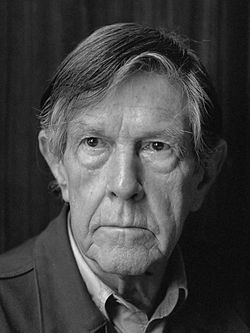0 avis
Les frères Moustaches / Alex Cousseau, Charles Dutertre
Livre
Edité par Ed. Le rouergue. Rodez , 2013
Les frères Moustaches sont une immense famille. Quand il le faut, ils sont là pour dire non. Non au pouvoir d'un Président-dictateur galactique. Pour cela ils taillent, rabotent et cousent, raillent, escamotent et osent. Ils s'exposent à la terrible punition du tyran. Ces clowns de tout temps dénoncent les travers et excès du pouvoir et demandent la liberté d'expression.
- Type de document
- Livre
- Langues
- français
- Description physique
- Non paginé : illustrations en couleur; 22 x 31 cm
- ISBN
- 978-2-8126-0580-2
- Date de publication
- 2013
- Cote
- A D
- Fonds
- Jeunesse
- Classification
- Albums
Se procurer le document
Pour réserver un document connectez-vous à votre compte.
Livre - 2013 - Un notaire peu ordinaire / Yves Ravey
Autre format
Issus de la même oeuvre
En savoir plus
Biographie

Biographie

John Milton Cage était un compositeur, poète et plasticien américain, né le 5 septembre 1912 à Los Angeles et décédé le 12 août 1992 à New York. He left Pomona College early to travel in Europe (1930-31), then studied with Cowell in New York (1933-4) and Schönberg in Los Angeles (1934): his first published compositions, in a rigorous atonal system of his own, date from this period. In 1937 he moved to Seattle to work as a dance accompanist, and there in 1938 he founded a percussion orchestra; his music now concerned with filling units of time with ostinatos (First Construction (in Metal), 1939). He also began to use electronic devices (variable-speed turntables in lmaginary Landscape no.1, 1939) and invented the 'prepared piano', placing diverse objects between the strings of a grand piano in order to create an effective percussion orchestra under the control of two hands. He moved to San Francisco in 1939, to Chicago in 1941 and back to New York in 1942, all the time writing music for dance companies (notably for Merce Cunningham), nearly always for prepared piano or percussion ensemble. There were also major concert works for the new instrument: A Book of Music (1944) and Three Dances (1945) for two prepared pianos, and the Sonatas and Interludes (1948) for one. During this period Cage became interested in Eastern philosophies, especially in Zen, from which he gained a treasuring of non-intention. Working to remove creative choice from composition, he used coin tosses to determine events (Music of Changes for piano, 1951), wrote for 12 radios (Imaginary Landscape no.4, also 1951) and introduced other indeterminate techniques. His 4'33" (1952) has no sound added to that of the environment in which it is performed; the Concert for Piano and Orchestra (1958) is an encyclopedia of indeterminate notations. Yet other works show his growing interest in the theatre of musical performance (Water Music, 1952, for pianist with a variety of non-standard equipment) and in electronics (Imaginary Landscape no.5 for randomly mixed recordings, 1952; Cartridge Music for small sounds amplified in live performance, 1960), culminating in various large-scale events staged as jamborees of haphazardness (HPSCHD for harpsichords, tapes etc, 1969). The later output is various, including indeterminate works, others fully notated within a very limited range of material, and pieces for natural resources (plants, shells). Cage also appeared widely in Europe and the USA as a lecturer and performer, having an enormous influence on younger musicians and artists; he wrote several books. From The Grove Concise Dictionary of Music edited by Stanley Sadie © Macmillan Press Ltd., London. Read more on Last.fm. User-contributed text is available under the Creative Commons By-SA License; additional terms may apply.


